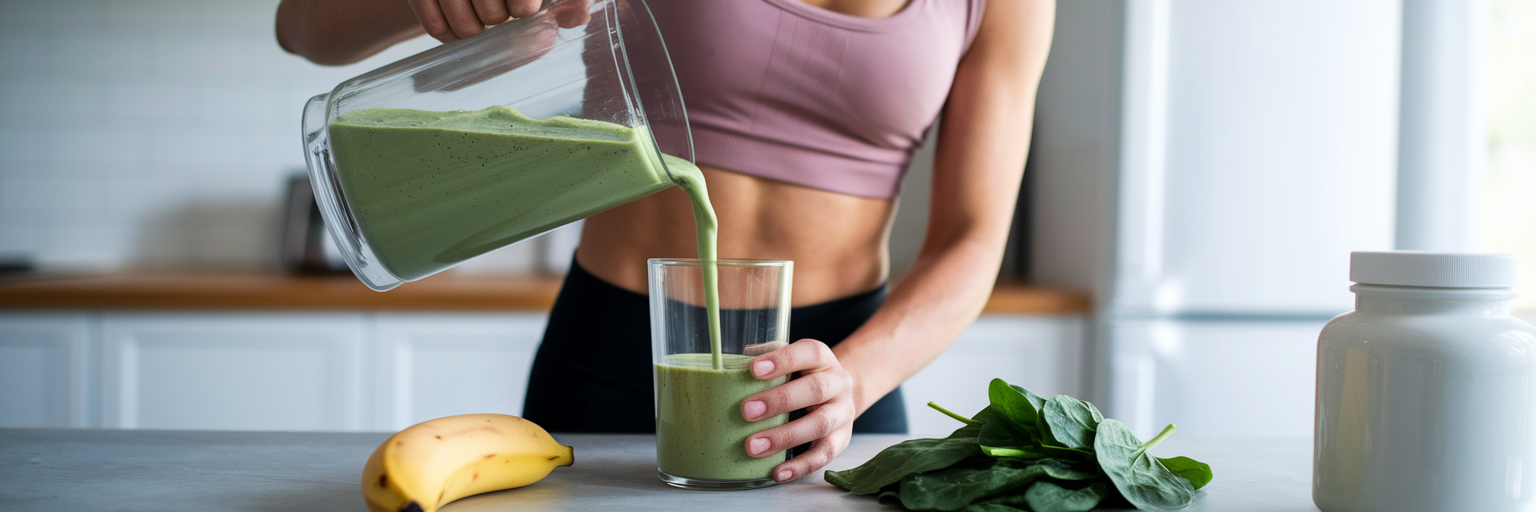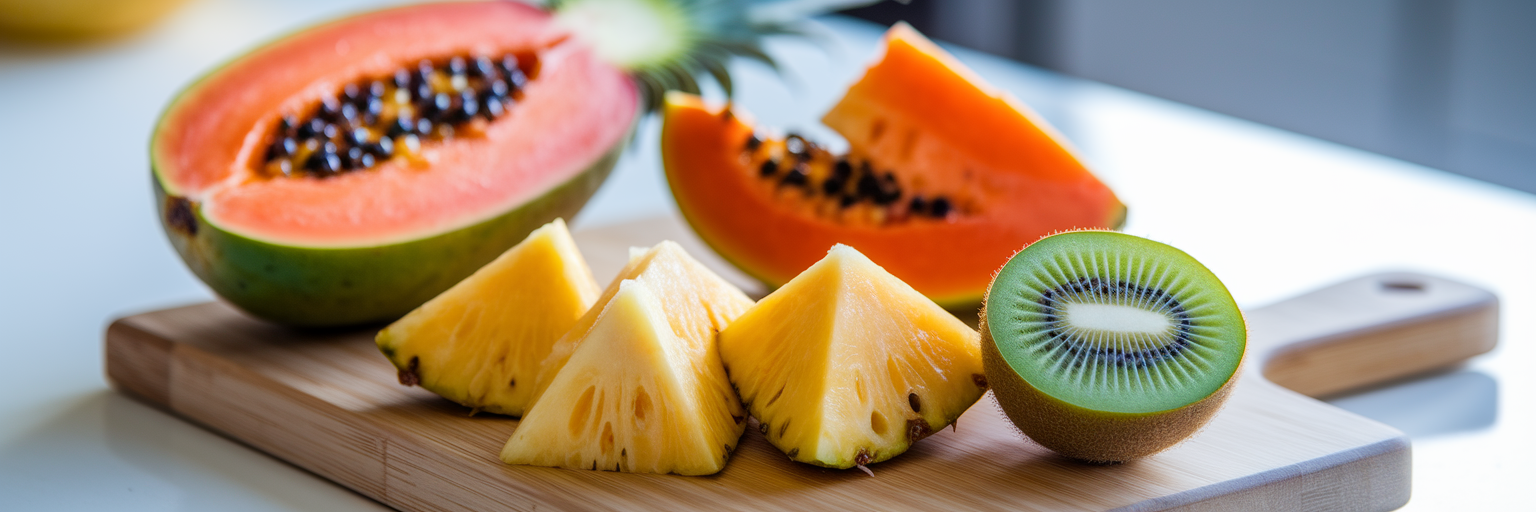Why Optimizing Your Protein Intake Matters
Choosing a vegan protein supplement is a fantastic investment in your health. You did the research, picked a clean formula, and are ready to feel the benefits. But the journey to getting the most from your powder doesn't stop at the scoop. It’s one thing to consume protein, but it’s another for your body to actually use it.
This is where the concept of bioavailability comes in. In simple terms, it’s not just about the grams of protein listed on the label, but how much of it your body can effectively break down and put to work for muscle repair, energy, and overall wellness. Of course, starting with one of our best protein powders is the foundation of any great routine.
Plant proteins are powerhouses of nutrition, but they often come packaged with fiber and other natural compounds that can slightly alter how they are digested. This is perfectly normal, but it does mean we can give our bodies a helping hand. Understanding how to improve plant based protein absorption is the key to truly maximizing your efforts.
The good news is that you don't need a degree in nutrition to make a difference. With a few simple adjustments to your routine, you can help your body absorb more of the goodness you’re putting into it. Let's explore five easy, practical ways to make your supplement work even harder for you.
1. Pair Your Shake with a Vitamin C Boost
One of the simplest yet most effective strategies is to pair your protein shake with a source of Vitamin C. Think of Vitamin C as a helpful partner that makes other nutrients more available to your body. Specifically, it enhances the absorption of non-heme iron, a type of iron found in plant-based foods.
Why does iron matter for protein? Your body needs adequate iron to support the metabolic processes that help you utilize protein for energy and muscle synthesis. When you improve iron uptake, you’re supporting the entire system. According to a report from CNBC, nutrition experts recommend this pairing, stating that plant-based sources of iron are more absorbable when you consume them with something high in vitamin C.
This doesn’t require complicated meal prep. You can easily add a handful of strawberries to your smoothie, squeeze fresh lemon juice into your shaker bottle, or blend in some tropical mango. A small amount is all it takes to make a noticeable difference. This simple habit ensures you get more out of every sip.
| Vitamin C Source | How to Add It | Bonus Benefit |
|---|---|---|
| Strawberries | Blend a handful (fresh or frozen) into your shake | Adds natural sweetness and fiber |
| Orange or Lemon | Squeeze the juice of half a fruit directly in | Brightens the flavor and cuts any earthy taste |
| Mango Chunks | Add 1/2 cup of frozen mango to your smoothie | Creates a creamy, tropical texture |
| Kiwi | Toss one peeled kiwi into the blender | Provides extra enzymes for digestion |
| Bell Peppers | Enjoy sliced peppers as a side with your shake | A great savory, crunchy option post-workout |
2. Perfect Your Timing for Peak Muscle Repair

You’ve probably heard people at the gym talk about the "anabolic window." It sounds intense, but it’s just a simple concept: for a short period after a workout, your muscles are especially receptive to nutrients. This window, typically lasting from 15 to 60 minutes post-exercise, is an ideal time to refuel with protein to support recovery and repair.
For anyone focused on fitness goals, this is the best time to take vegan protein. Consuming your shake during this period provides your muscles with the amino acids they need right when they are primed to use them. It helps kickstart the repair process, which is essential for building strength and reducing soreness. If you're looking for inspiration on what to blend up after your next gym session, check out these 3 easy vegan protein recipes we developed that you'll actually crave.
But what if you’re not hitting the gym? Don't worry, timing is still relevant, but consistency becomes the main goal. For general wellness, spreading your protein intake throughout the day helps maintain stable energy levels and supports your body's countless daily functions. And yes, you should still prioritize protein on your rest days. Muscles don't just repair for an hour after exercise; the process continues for a day or two, and consistent protein intake provides the necessary building blocks.
3. Stay Hydrated to Help Your Body Process Protein
Water is one of the most overlooked tools for nutrient absorption. Proper hydration is absolutely essential for your body to metabolize protein efficiently. Think of water as the ultimate delivery service; it helps transport amino acids to your muscles and carries away metabolic waste products.
When you consume protein, your body breaks it down, and one of the byproducts is urea. Your kidneys are responsible for filtering this out of your bloodstream, and they need plenty of water to do their job effectively. When you're dehydrated, this process slows down, putting unnecessary strain on your system and making it harder for your body to use the protein you’ve consumed. This is a simple but powerful tip on how to increase protein absorption.
Making sure you drink enough water doesn't have to be a chore. Here are a few simple habits to stay on top of your hydration:
- Start your day with a large glass of water before you do anything else.
- Carry a reusable water bottle with you as a visual reminder to sip throughout the day.
- Remember that the liquid you use to mix your protein shake counts toward your daily intake.
- Set reminders on your phone or use an app to track your water consumption if you often forget.
4. Add Enzyme-Rich Foods for Better Digestion

Have you ever felt a little bloated after a meal? Sometimes, our digestive system can use a little support, especially when we increase our protein intake. A great natural way to provide this support is by incorporating foods rich in digestive enzymes.
Specifically, we're talking about proteases, which are enzymes that specialize in breaking down protein into smaller, more absorbable amino acids. Two of the most well-known sources are bromelain from pineapple and papain from papaya. Adding these fruits to your protein shake not only gives it a delicious tropical twist but also helps your body digest the protein more smoothly.
The benefit is direct: a more efficient digestive process means you absorb more of the essential nutrients from your supplement, with less potential for discomfort. A handful of pineapple chunks blends perfectly with the rich taste of our chocolate vegan protein, creating a delicious, digestion-friendly treat. Kiwi is another excellent choice that’s packed with enzymes. Beyond fruits, fermented foods like kimchi or sauerkraut can also support overall gut health, which is the foundation for all nutrient absorption.
5. Forget the Myth of 'Incomplete' Plant Protein
Let's clear up one of the most persistent myths in nutrition: the idea that plant proteins are "incomplete." This claim is outdated and has been widely debunked. The truth is, all plant foods contain all nine essential amino acids. This isn't just an opinion; it's backed by science. A comprehensive review published by the National Center for Biotechnology Information (NCBI) states that the claim of plant foods "missing" amino acids is demonstrably false.
The confusion comes from the concept of "limiting amino acids." This just means that some plant foods might have a lower amount of one or two specific amino acids compared to others. However, this is easily addressed by simply eating a varied diet throughout the day. Your body is smart; it creates a "pool" of amino acids from everything you eat. As long as you're consuming a mix of different plant foods, you will get everything you need.
This also busts the related myth of "protein combining," which suggested you had to eat certain foods together in the same meal. There’s no need to meticulously pair rice and beans at every sitting. Just focus on variety. By incorporating different complete plant protein sources into your diet, you'll effortlessly cover all your bases. To learn more about optimizing a plant-forward lifestyle, feel free to explore our blog for more tips and insights.
Here are some great categories to mix and match:
- Legumes: Lentils, chickpeas, black beans, and peas.
- Whole Grains: Quinoa, oats, brown rice, and whole-wheat bread.
- Nuts & Seeds: Almonds, walnuts, chia seeds, hemp seeds, and pumpkin seeds.
- Soy Products: Tofu, tempeh, and edamame.
Your Simple Plant-Powered Action Plan
Making your vegan protein supplement more effective doesn't require a complete lifestyle overhaul. It's about making small, smart choices that add up. You're already committed to your health, and these simple habits are the final step to maximizing your results.
Here’s a quick recap of these easy vegan protein supplement tips:
- Pair with Vitamin C: Add fruits like strawberries or a squeeze of lemon to your shake.
- Time it Right: Aim for your shake within an hour after your workout.
- Stay Hydrated: Drink plenty of water throughout the day to support your kidneys.
- Add Enzymes: Blend in pineapple or papaya for a digestive boost.
- Eat a Variety: Enjoy a mix of legumes, grains, nuts, and seeds daily.
If you found these tips helpful, please share this article with a friend! Ready to put these tips into practice? Explore our full collection of plant-based supplements and find the perfect partner for your health journey.



